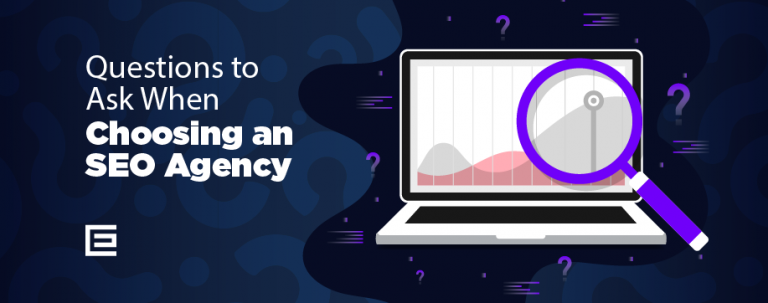At their core, cookies are small text files that a website sends to a user’s device while they are browsing. These files are designed to hold a modest amount of data specific to the particular user and website, enabling the site to remember your actions and preferences over time.
Cookies are the unsung heroes of user convenience, allowing websites to remember login details, language preferences, and other customizable aspects, thus saving time and enhancing browsing efficiency. They are essential for functions such as keeping items in a shopping cart while you continue to shop, or for allowing one-click access to your email or social media accounts.
The importance of cookies extends beyond user convenience; they are pivotal in the digital economy. Cookies contribute to the business side of the digital world by helping advertisers tailor online ads to individual consumers. They also provide valuable insights into user behavior, which websites and online services can use to improve user experience. For instance, by analyzing cookies data, a website can optimize its layout or content to better serve its audience’s preferences.
Moreover, cookies are integral to the functionality of many online services we take for granted. Without cookies, the web would be a far less responsive and interactive space. They enable dynamic web pages that can respond to individual user actions, leading to more engaging and efficient online experiences.
The Basics of Cookies
Cookies, in their most basic form, are small packets of data sent from a website and stored on the user’s computer by the user’s web browser while the user is browsing. They were designed to be a reliable mechanism for websites to remember stateful information or to record the user’s browsing activity. This includes details like clicking particular buttons, logging in, or recording which pages were visited in the past.
When a user visits a website that utilizes cookies, the site’s server sends a request to the user’s device to store this snippet of information. If the user consents (often implicitly through their browser settings), the browser packages the information into a small file that it saves locally. The next time the user visits the site, the browser sends the cookie back to the server, informing it of previous activity on the site.
The data stored in cookies is typically not personally identifiable, at least in the cookie itself. It usually includes information like unique session identifiers, user preferences, and profile data. For example, a cookie might store the contents of your shopping cart, your preferred page layout, or the fact that you have logged in so you don’t need to enter your credentials every time you visit.
Cookies can also store more detailed data, such as the user’s name, email address, and sometimes even a hashed version of the password, if the website is designed to remember login details for convenience. However, due to privacy concerns, modern web practices encourage the storage of minimal sensitive data and often involve encryption to safeguard what is stored.
In essence, cookies serve as a memory for websites, allowing them to recognize users and remember their individual preferences, thereby facilitating a more personalized and efficient browsing experience. They are a foundational technology that enables essential website functionality and user-friendly web navigation.
Types of Cookies
Cookies on the internet can be categorized into different types based on their purpose, duration, and the domain to which they belong. Understanding these variations is crucial for both web users and developers to navigate, implement, and manage web privacy effectively.
Session Cookies
Session cookies, also known as transient cookies, are temporary and are used to remember the user’s online activities within one session. These cookies are created afresh with each visit to a website and are deleted as soon as the browser is closed. They are essential for the functionality of web pages; without them, actions such as completing a form or shopping online would become much more cumbersome. Session cookies do not collect information from the user’s computer; they typically store information in the form of a session identification that does not personally identify the user.
Persistent Cookies
In contrast to session cookies, persistent cookies, also known as permanent or stored cookies, are stored on the user’s device for a set period of time, which is specified in the cookie. They are activated each time the user visits the website that created that particular cookie. These cookies remember your preferences and actions across a site (or in some cases, across different websites) to provide convenient and tailored experiences. For example, they can be used to remember login details, language preferences, and other settings, so you don’t have to set them up every time you visit the site.
Third-party Cookies
Third-party cookies are set by a domain other than the one the user is visiting; these are often used for online-advertising purposes and social media integrations. For instance, a cookie set by a digital analytics company can be considered a third-party cookie. These cookies collect data about user behavior across various sites, creating a profile of a user’s interests, which is then used to show relevant ads to them. They can be either session or persistent cookies. Due to privacy concerns and regulations, the use of third-party cookies is declining, with major browsers phasing them out in favor of more privacy-preserving alternatives.
Each type of cookie has its role in enhancing user experience, but they also raise important questions about privacy and user consent. Understanding these different types of cookies is essential for users to manage their online presence and for website owners to comply with privacy laws and regulations.
How Cookies Work
The lifecycle of a cookie begins with the interaction between a web server and a browser. It’s a process that remains largely invisible to users, yet it is fundamental to the functionality and convenience of modern web browsing.
The Process from Server to Browser
When a user visits a website, the site’s server sends a message to the user’s browser requesting permission to store a cookie. If the browser’s settings allow for it, the browser will accept the cookie and save the file in a designated location on the user’s device. This file contains a unique identifier for the user or session, along with other data the website wishes to remember. The next time the user visits the website, the browser sends the cookie back to the server, informing it of the user’s previous interactions with the site. This back-and-forth communication allows the server to maintain a continuous and personalized experience for the user.
Cookie Storage and Management
Cookies are stored on the user’s device in a specific directory set aside by the web browser. Each browser has its own way of managing cookies, providing options for users to see what cookies have been stored, to delete them individually or in bulk, and to set preferences for the handling of future cookies. Users can choose to block cookies altogether, accept only certain types of cookies, or be notified each time a website attempts to set a cookie. The management of cookies is a balance between maintaining a smooth user experience and protecting privacy.
User Experience and Cookies
Cookies are designed to enhance the user experience by making web navigation more efficient and user-friendly. They enable websites to remember login information, so users don’t have to re-enter their credentials every time they visit. Cookies also keep track of items in a shopping cart, or user preferences like theme settings or language selection. For websites that require user authentication, cookies help maintain the session as the user navigates through the site, ensuring that the user remains logged in as they move from page to page. Without cookies, each page visit would be treated as a separate event, with no memory of what happened before, making many of today’s web functionalities cumbersome or impossible.
In essence, cookies are a critical component of the web’s infrastructure, providing a way for websites to remember users and their preferences, thereby creating a smoother, more personalized browsing experience. However, the utility of cookies must be balanced with considerations for privacy and user control, a topic that has become increasingly important in the digital age.
Privacy and Security Concerns
The use of cookies, while essential for a fluid online experience, also raises significant privacy and security concerns that users and regulators alike are increasingly attentive to.
Tracking and Personal Data
Cookies, particularly third-party cookies, are capable of tracking a user’s browsing habits across multiple sites, creating detailed profiles of online behavior. Advertisers and data brokers often use this data to target users with personalized advertising. This level of tracking has raised concerns about the extent to which companies gather and use personal data without explicit consent. The potential for misuse of this data is a significant privacy worry, especially when it involves sensitive information that users may not be aware is being collected. Regulations such as the General Data Protection Regulation (GDPR) in the European Union and the California Consumer Privacy Act (CCPA) in the United States have emerged in response, giving users more control over their personal data.
Security Vulnerabilities
From a security standpoint, cookies can be exploited by cyber attackers. If a cookie contains sensitive information, such as a session ID or a username, and it is not properly secured, it could be intercepted by unauthorized parties in a breach known as session hijacking. Additionally, cookies can be vulnerable to cross-site scripting (XSS) attacks, where attackers inject malicious scripts into web pages viewed by other users. If a cookie is not set with the ‘HttpOnly’ flag, it can be accessed through such scripts, potentially leading to the theft of the cookie’s data.
Moreover, persistent cookies that remain on a user’s device for an extended period can become a security risk if they are not regularly updated or encrypted. They can become an attractive target for attackers looking to gain long-term access to a user’s accounts or to track their online activities over time.
In conclusion, while cookies are a fundamental part of the web’s functionality, they come with inherent privacy and security risks. It is crucial for users to be aware of these risks and for website operators to implement best practices in cookie management, such as using secure and HttpOnly flags, to mitigate potential threats. As the digital landscape evolves, so too must the strategies for protecting personal data and maintaining user trust.
Managing Cookies
As digital privacy concerns grow, understanding how to manage cookies has become an essential skill for internet users. Managing cookies effectively allows users to retain control over their online privacy and security.
How to View Cookies
Most modern web browsers provide an option to view cookies. This feature is typically found in the ‘Settings’ or ‘Preferences’ menu under the ‘Privacy’ or ‘Security’ tab. Users can access detailed information about the cookies stored on their device, including the name of the cookie, the website it belongs to, its content, and its expiration date. For instance, in browsers like Google Chrome, users can go to ‘Settings’, then ‘Privacy and security’, and click on ‘Cookies and other site data’ to see a list of all cookies and site data. Similarly, other browsers have their own pathways to access this information, allowing users to review what data is being stored.
Deleting and Controlling Cookies
Once users have accessed the cookies stored on their device, they have several options. They can delete individual cookies, remove all cookies from a specific site, or clear all cookies stored by their browser. This can usually be done with a few clicks within the same ‘Cookies’ section of the browser’s settings. Additionally, users can control how future cookies are handled by their browser. They can choose to block all cookies, only accept first-party cookies, or block cookies from specific sites. Most browsers also offer an option to clear all cookies when the browser is closed, which can be a useful tool for those who want to maintain a higher level of privacy.
Furthermore, many browsers now include features to prevent third-party cookies, which are often the ones used by advertisers for tracking purposes. Users can also install browser extensions that provide more granular control over cookies and tracking scripts, giving them even greater command over their online privacy.
Managing cookies is a proactive step towards safeguarding one’s online privacy. By knowing how to view, delete, and control cookies, users can navigate the web with greater confidence, knowing that they have taken steps to protect their personal information from unwanted tracking and potential security breaches.
The Future of Cookies
The landscape of digital cookies is undergoing significant changes, primarily driven by evolving privacy laws and the development of alternative tracking technologies. These shifts are reshaping how user data is collected, stored, and utilized across the web.
Changes in Privacy Laws
In recent years, there has been a global push towards stricter privacy regulations, with laws such as the General Data Protection Regulation (GDPR) in Europe and the California Consumer Privacy Act (CCPA) in the United States setting new standards for data protection. These laws mandate greater transparency and user control over personal data, which includes how cookies are used and consented to. The tightening of privacy laws has led to more websites implementing consent management platforms where users can choose which types of cookies they allow. This regulatory environment is forcing businesses to rethink their approach to cookies, often moving towards practices that prioritize user privacy and data security.
Alternatives to Cookies
As the effectiveness of cookies is challenged by both user behavior (such as the use of incognito modes and ad blockers) and regulatory changes, the industry is exploring alternative methods for tracking and personalization. One such method is fingerprinting, which gathers information about a user’s device and browser settings to create a unique profile. Another emerging alternative is the use of first-party data, where businesses rely on information provided directly by the customer through interactions such as purchases or account sign-ups.
Tech giants are also developing their own solutions; for example, Google’s ‘Privacy Sandbox’ initiative aims to create a set of standards that would enable personalized advertising without the privacy implications of third-party cookies. Similarly, other companies are looking into the potential of blockchain and other decentralized technologies to offer privacy-centric ways of tracking and verifying user interactions.
In summary, the future of cookies is bound to be shaped by the dual forces of privacy advocacy and technological innovation. As the digital world continues to evolve, so too will the methods and means of maintaining a balance between personalized user experiences and the right to privacy. The cookie, as we know it today, may become a thing of the past, replaced by more sophisticated and privacy-compliant technologies.
Looking for Web Design Services
We would love to talk to you! If you are looking for an award-winning internet marketing agency with proven track records give us a call at 919-341-8901 or fill out the contact form below to learn more about our Web Design Services.
Listen to this article
Tags: Questions & Answers




